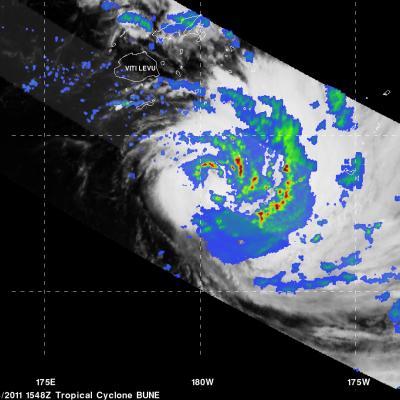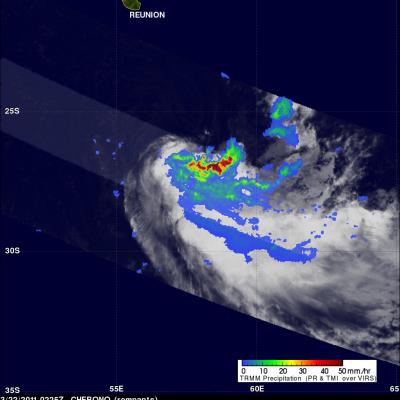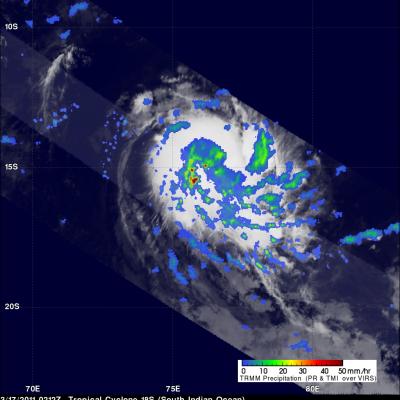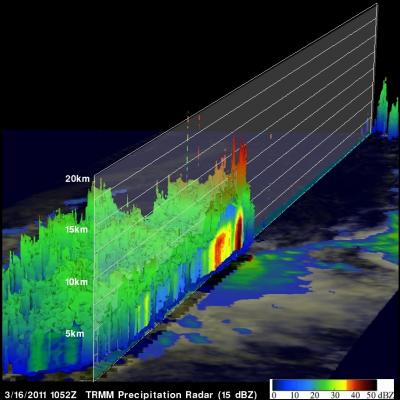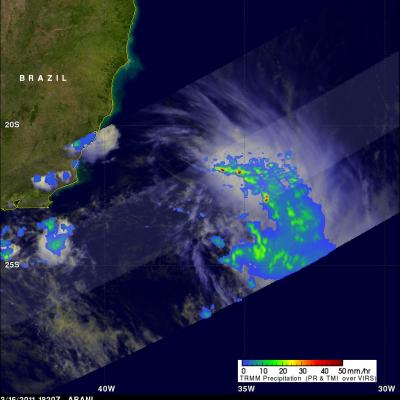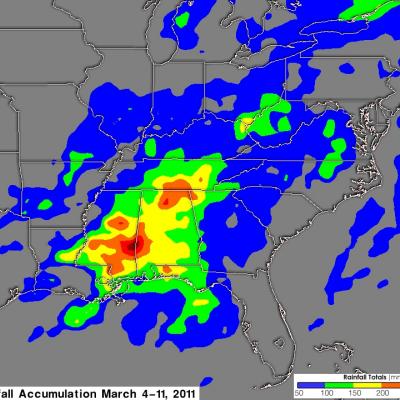Tropical Cyclone Bune
Tropical cyclone BUNE was southeast of the Fiji Islands and close to a category one on the Saffir-Simpson scale when the TRMM satellite passed above on 24 March 2011 at 1548 UTC. TRMM Microwave Imager (TMI) and Precipitation Radar (PR) data from this pass show that large rain bands around BUNE contained numerous intense thunderstorms. BUNE is expected to peak as a category two tropical cyclone with wind speeds of about 85 kts (~98 mph) on 26 March 2011 while moving over the open waters northeast of New Zealand.


